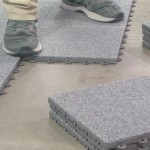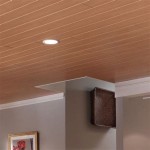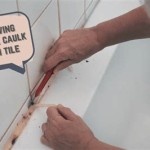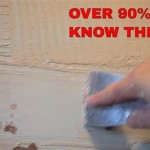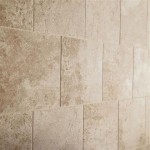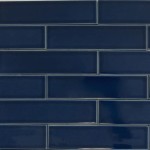Can I Lay Tile Over Painted Concrete Floor? A Comprehensive Guide
The question of whether tile can be successfully installed over a painted concrete floor is a common one. The answer, however, is not a simple yes or no. Several crucial factors must be considered to ensure the longevity and aesthetic appeal of the tiled surface. Ignoring these aspects can lead to tile failure, resulting in costly repairs and significant inconvenience.
This article provides a detailed exploration of the considerations involved in tiling over painted concrete, outlining the necessary preparation steps, potential challenges, and viable solutions to ensure a durable and visually pleasing result. It is important to understand that proper preparation is paramount; shortcuts in this phase can compromise the entire project.
Assessing the Existing Paint Condition and Type
The initial and most critical step involves a thorough assessment of the existing paint. This assessment involves identifying the type of paint and evaluating its adhesion to the concrete substrate. The type of paint significantly influences the preparation method required. Oil-based paints, for instance, present a different set of challenges compared to latex-based paints. Identifying the paint type can be achieved through a simple chemical test or by examining historical records of the building or previous renovation projects.
The adhesion test is equally important. A simple scratch test, using a putty knife or similar tool, can reveal whether the paint is firmly bonded to the concrete. If the paint chips or peels easily, it suggests poor adhesion. A more robust adhesion test involves applying a strong adhesive tape to the painted surface and then quickly removing it. If significant amounts of paint are pulled away with the tape, it indicates a weak bond, necessitating more extensive preparation.
The presence of multiple layers of paint, especially if applied over several years, can also complicate the process. Each layer might have varying degrees of adhesion and compatibility with the tile adhesive. A thick build-up of paint can also act as a barrier, preventing the tile adhesive from properly bonding to the concrete below.
Surface Preparation: Removing or Preparing the Paint
Depending on the paint's condition and type, the surface preparation strategy will vary. In cases where the paint is exhibiting poor adhesion or is known to be incompatible with tile adhesives, complete removal is the preferred approach. Several methods can be employed for this purpose. Mechanical removal, involving the use of floor scrapers, grinders, or shot blasters, is often the most effective way to eliminate paint entirely. These methods, however, can generate significant dust and require appropriate safety precautions, including the use of respirators and dust collection systems.
Chemical paint strippers are another option. These strippers work by softening the paint, allowing it to be scraped away more easily. When using chemical strippers, it is crucial to follow the manufacturer's instructions carefully and ensure adequate ventilation to avoid inhaling harmful fumes. After using a chemical stripper, the surface must be thoroughly rinsed and neutralized to remove any residual chemicals that could interfere with the tile adhesive.
If the paint is well-adhered and compatible with the selected tile adhesive, it might be possible to tile directly over it. However, in such cases, thorough surface preparation is still essential. This involves scuffing the painted surface with sandpaper or a grinding wheel to create a rough texture that will enhance the adhesive's grip. The surface must then be meticulously cleaned to remove any dust, debris, or contaminants that could compromise the bond.
Regardless of the chosen method, ensuring a clean, stable, and properly prepared surface is paramount. Any remaining loose paint, dust, or debris will create a weak point in the system, potentially leading to tile delamination or cracking over time.
Selecting the Right Tile Adhesive and Installation Techniques
Choosing the appropriate tile adhesive is crucial for a successful installation over painted concrete. Not all adhesives are created equal, and some are specifically formulated for use over non-porous surfaces, such as painted concrete. Thin-set mortars modified with polymers are generally recommended for this application. These modified mortars offer enhanced adhesion, flexibility, and water resistance, making them better suited for the challenging conditions presented by painted concrete.
When selecting an adhesive, it is essential to consult the manufacturer's specifications to ensure compatibility with both the chosen tile and the existing paint. Some adhesives might not be suitable for certain types of tile, such as large-format tiles or natural stone, which require adhesives with specific properties. Similarly, certain paints might react negatively with certain adhesives, leading to bond failure.
The installation technique is equally important. Applying the adhesive in a thin, even layer is essential for ensuring proper bonding. Using the correct size and type of notched trowel will help achieve this. It is also crucial to avoid air pockets or voids beneath the tiles, as these can weaken the bond and create areas of stress concentration. Back-buttering larger tiles can help ensure full coverage and a stronger bond.
Furthermore, using appropriate expansion joints is critical, especially in large areas or in areas subject to temperature fluctuations. Expansion joints allow the tile to move slightly without cracking or delaminating. These joints should be placed at regular intervals and along perimeters to accommodate movement and prevent stress build-up.
Grouting is the final step in the tiling process. Selecting a grout that is compatible with the chosen tiles and the intended use of the space is important. Epoxy grouts, for instance, are highly resistant to water and stains, making them ideal for bathrooms and kitchens. Cementitious grouts are more porous and might require sealing to prevent staining and water damage. Proper grout application and cleaning are essential for achieving a professional-looking finish.
In addition to the above, the specific environment where the tiling is taking place must be considered. Is the floor subject to heavy foot traffic? Will it be exposed to moisture or chemicals? Does the concrete suffer from any underlying issues such as cracking or moisture migration? All of these factors can influence the necessary preparation, adhesive selection, and installation techniques.
It is strongly recommended to consult with a qualified and experienced tile installer before embarking on a tiling project over painted concrete. A professional can assess the specific conditions, recommend the appropriate materials and methods, and ensure that the installation is carried out correctly, minimizing the risk of future problems.
While it is indeed possible to lay tile over a painted concrete floor, successful completion hinges on careful assessment, meticulous preparation, and the selection of suitable materials and techniques. Shortcuts or compromises in any of these areas can significantly increase the likelihood of tile failure, leading to costly rework and dissatisfaction. Therefore, a thorough understanding of the challenges and potential solutions is paramount to successfully completing such a project.

Tile Over Painted Concrete No Styles
How To Tile Onto Concrete Floors Porcelain Super
:max_bytes(150000):strip_icc()/can-you-install-tile-directly-on-concrete-1822600-04-458f7bb6c78348c1835cf8054ef36553.jpg?strip=all)
How To Install Tile Over Concrete

Faux Cement Tile Painted Floors Bright Green Door

My Mudroom Floors 80 Makeover How To Paint Your Ugly Concrete Postbox Designs

Deciding Between Painting Or Tiling A Concrete Floor Young House Love
:max_bytes(150000):strip_icc()/can-you-install-tile-directly-on-concrete-1822600-01-8a89ceab1a274fb8ac81890ab7fc6b1b.jpg?strip=all)
How To Install Tile Over Concrete

Faux Cement Tile Painted Floors Bright Green Door

How To Make A Diy Painted Concrete Floor Hometalk

Deciding Between Painting Or Tiling A Concrete Floor Young House Love
Related Posts

